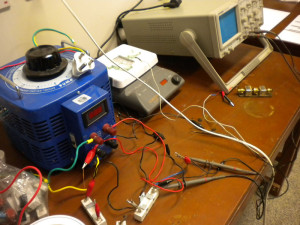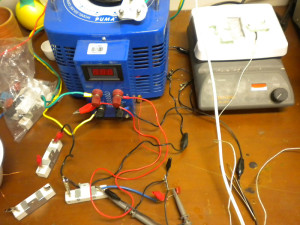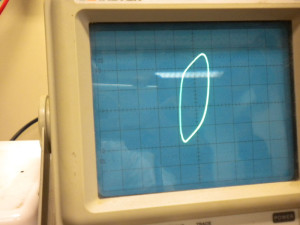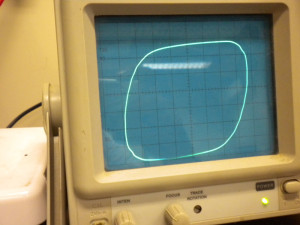| Student Manual | 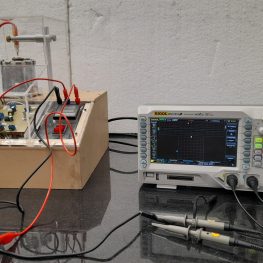 Ferroelectric materials are dielectric materials whose spontaneous polarization has at least a couple of equilibrium states. The macroscopic polarization of these materials is switchable by applying an external electric field. They are a special type of polar material. Not all materials having molecular dipole moment are ferroelectric materials. For instance, individual water molecules possess effective electric dipole moments, but they are randomly oriented in space and these molecular dipole moments do not spontaneously polarize so water is not a ferroelectric material. |
| Sample Results | Ferroelectric loop at 130˚CAnother instance of a ferroelectric loop at 110˚CFerroelectric loop at 80˚CSimulation results when sample capacitor is a conventional linear capacitor |
| Hardware Manual | Operation manual |
| Experiment Code | 2.13 |
| Version | March 23, 2022 |
Further Readings and References
- Basic Solid State ChemistryJohn Wiley and Sons, Anthony R. West, 53, (1996).
- Properties of Materials: Anisotropy, Symmetry, StructureOxford, R.E. Newnham, 174, .
- The phase diagram of KNO3 to 40 KbarsJ. Phys. Chem. Solids, E. Rapoport, G.C. Kennedy,, 26, (1995).
- Ferroelectric hysteresis measurement and analysisNational Physical Laboratory, University of Manchester, M. Stewart and M.G. Cain, (1999).
- Growth and single crystal refinement of phase-III potassium nitrate, KNO3Acta Cryst. B, Evelyn J. Freney, Laurence A.J. Garvie, Thomas L. Groy and Peter R. Buseck, 65, 659, (2009).
- Rochelle Salt as a dielectricPhys.Rev, C.B. Sawyer and C.H. Tower, 35, 269, (1930).
- A classroom experiment to demonstrate ferroelectric hysteresisAmerican Journal of Physics, M. Dawber, I. Farnan, and J.F. Scott, 71(8), (2003).
Pictorial Procedure
